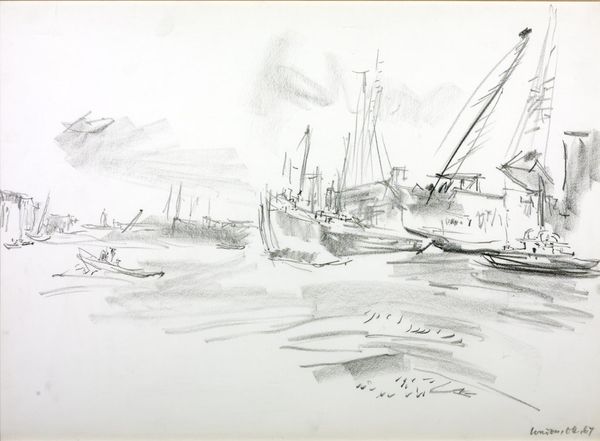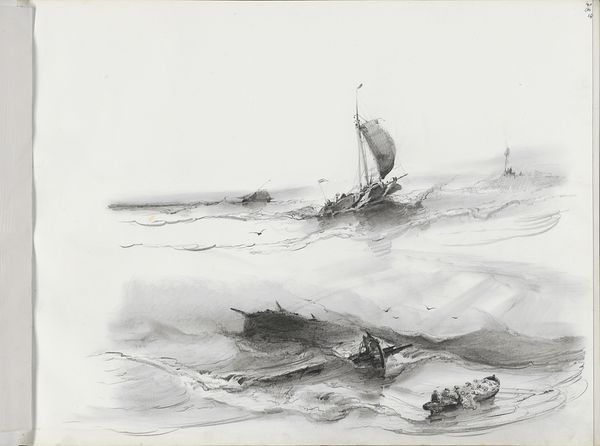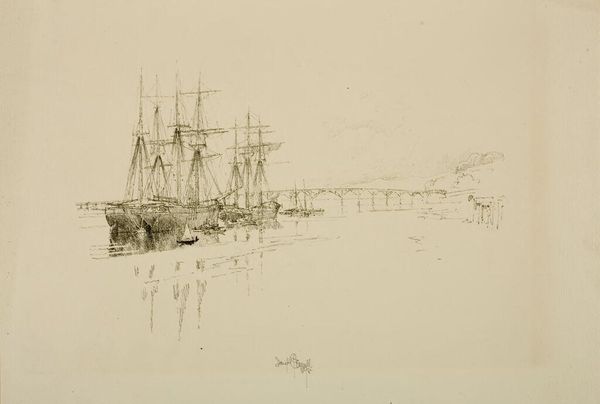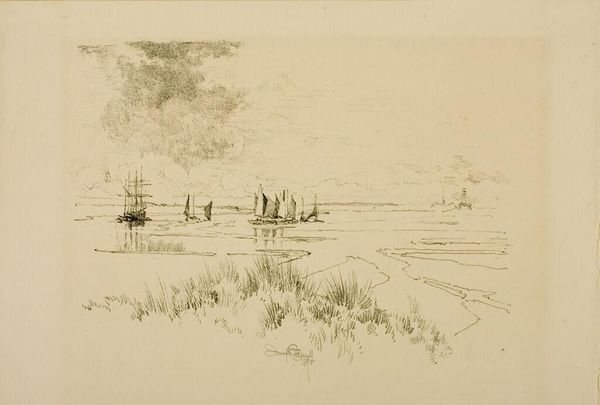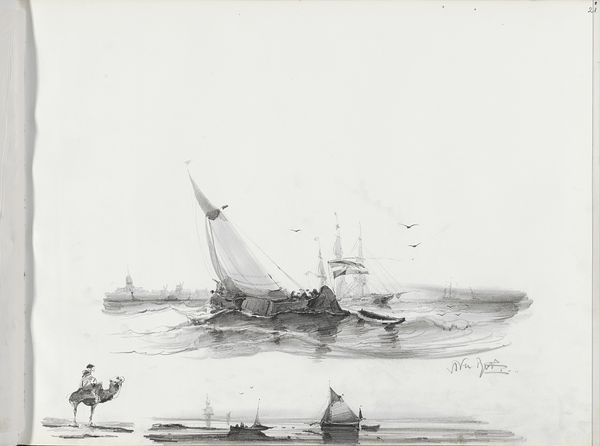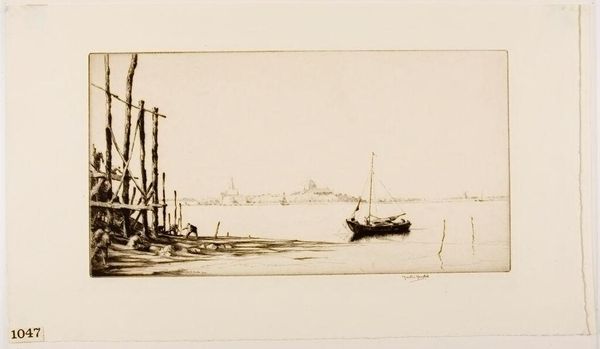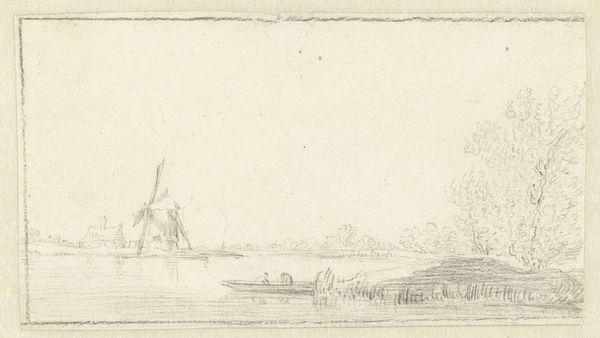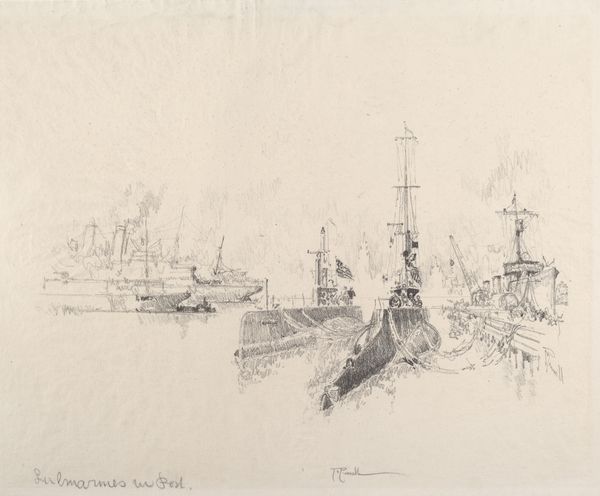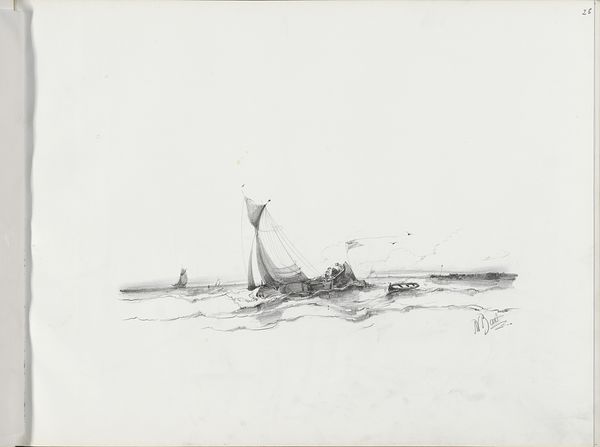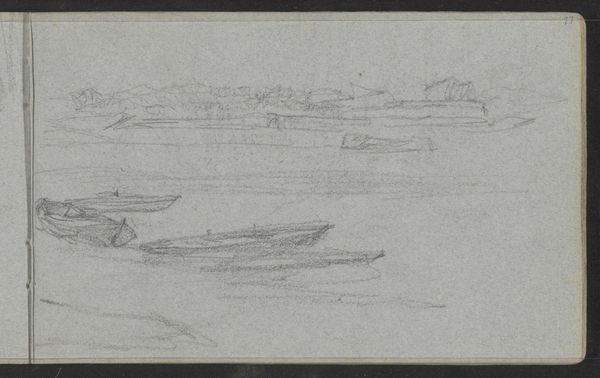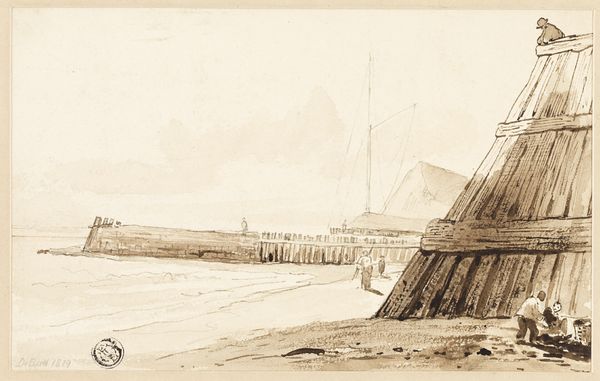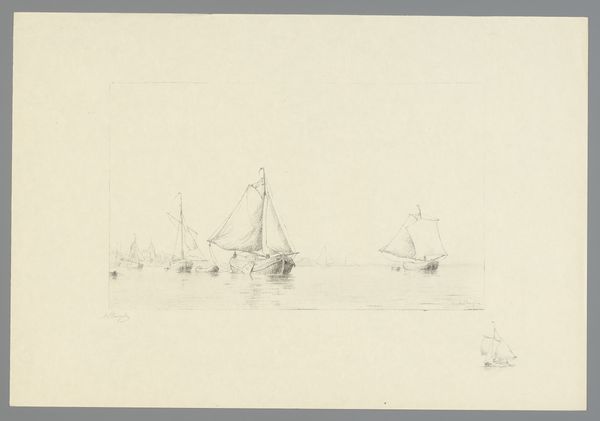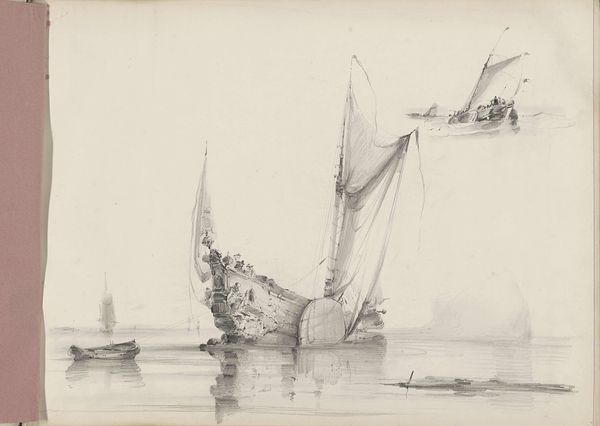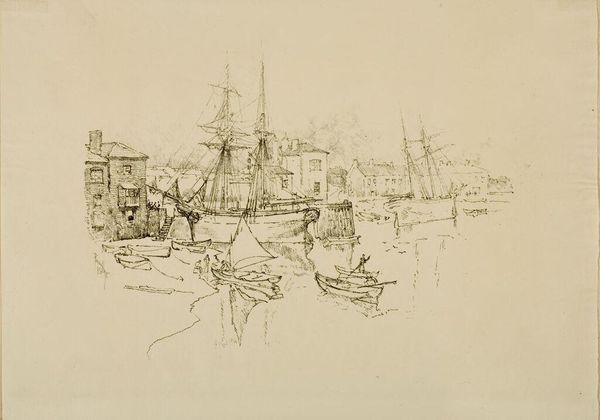
print, etching
# print
#
etching
#
landscape
#
etching
#
line
#
russian-avant-garde
#
cityscape
Copyright: Public domain US
Curator: Looking at Anna Ostroumova-Lebedeva's etching, "View from the Tuchkov Bridge," made in 1922, the delicate lines really create an ethereal atmosphere. What's your immediate reaction? Editor: Stark, almost ghostly. The image presents a world muted and subdued. But the delicate craftsmanship does allow for a sense of quiet resilience to come through. Curator: I agree. And in terms of her practice, Ostroumova-Lebedeva was quite innovative in her use of etching, pushing the boundaries of printmaking at the time. Think about the labor involved, the meticulous process of creating the plate. It wasn’t just about aesthetics; it was a dedication to craft. Editor: Precisely! This piece really does present an opportunity to unpack early Soviet art and gendered labor practices. Here we have a female artist at a time of radical upheaval. I think understanding the socio-political implications here invites critical conversations about artistic production in revolutionary Russia. Curator: Good point! Consider also the materiality, the tangible nature of printmaking, versus the ethereal qualities of the image. The ships, for instance, represented progress, trade and labor - they become almost ghost ships floating in historical context. The weight and substance they carried at the time of their physical creation can be recontextualized to the economic shifts and post-revolutionary anxieties present during the artwork's production in the 1920s. Editor: Absolutely. The ships can be a representation of larger systemic concerns. Looking at it through an intersectional lens allows an examination of labor, commerce, and gender within the complex narrative of that era. This artwork also allows for examination into questions of urban identity formation, given the rapid restructuring of society in that time. Curator: So well articulated! The print truly becomes a physical record of socio-economic conditions of labor, trade, and revolution in Russia at that time. What a testimony to artistic production reflecting back social structure. Editor: Exactly, and a challenge to narratives about historical change being inevitably or universally "progressive". I wonder: What other layered narratives can be brought out by understanding art through different theoretical frameworks?
Comments
No comments
Be the first to comment and join the conversation on the ultimate creative platform.
